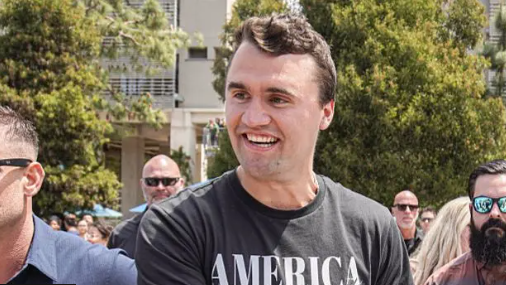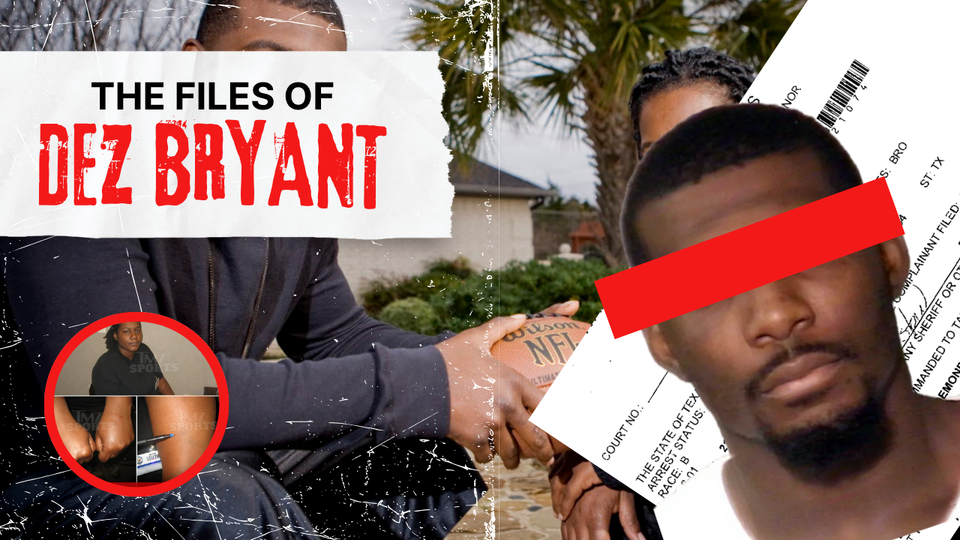Inside Shane Tamura's Attack on NFL Headquarters

Shane Devon Tamura, 27, committed a mass shooting at 345 Park Avenue on July 28, 2025, killing four innocent people including NYPD Officer Didarul Islam before taking his own life. The Las Vegas resident drove cross-country to target the Manhattan skyscraper housing NFL headquarters and Blackstone.
Tamura's suicide note contained rambling grievances against the NFL regarding chronic traumatic encephalopathy (CTE) and referenced the 2005 suicide of former Pittsburgh Steelers player Terry Long. The note states: "Terry Long football gave me CTE and it caused me to drink a gallon of antifreeze. You can't go against the NFL, they'll squash you."
Terry Long
To understand Shane Tamura's final act, you must first understand Terry Long's death, and the NFL's response to it.
On June 7, 2005, Long was found unresponsive in his suburban Pittsburgh home. The 45-year-old former Steelers lineman had consumed an entire gallon of antifreeze in what would be ruled a suicide. But Long's death became a watershed moment in the NFL's battle against CTE research when neuropathologist Dr. Bennet Omalu performed the autopsy and found clear evidence of chronic traumatic encephalopathy, the degenerative brain disease caused by repeated head trauma.
Initially, Allegheny County Coroner Dr. Cyril Wecht ruled that Long died of meningitis caused by football-related brain injury. But the death certificate was quietly revised on October 19, 2005—a change Wecht's office never publicly announced, listing the manner of death as suicide from antifreeze poisoning.
Dr. Joseph Maroon, the Steelers' team physician and a nationally recognized concussion expert, immediately disputed any connection between Long's brain injury and his death. "I have never seen head injuries turn someone into an arsonist or someone who would defraud the government," Maroon told reporters, referencing Long's legal troubles stemming from insurance fraud charges related to his burned poultry processing plant.
But Dr. Omalu maintained his position: "People with chronic encephalopathy suffer from depression. The major depressive disorder may manifest as suicide attempts. Terry Long committed suicide due to the chronic traumatic encephalopathy due to his long-term play."
The NFL disputed any connection between Long's brain injury and his death, establishing a pattern of acknowledging CTE while disputing its role in player suicides and violence.
Tamura's note directly references Long's case and requests the same post-mortem brain examination: "Study my brain please I'm sorry Tell Rick I'm sorry for everything."
The Making of Shane Devon Tamura
Shane Devon Tamura was born in 1998 in Honolulu, Hawaii. His family moved to Santa Clarita, California, where he played football at Golden Valley High School and Granada Hills Charter. He earned all-conference honors as a running back. Coach Walter Roby described him as a skilled player who was "quiet, well-mannered, very coachable."
Former teammate Anthony Michael Leon said despite Tamura's talent, he never expressed NFL ambitions. "I knew so many kids in high school who made it clear that's all they wanted to do. I never got that from Shane."
After high school, Tamura moved to Las Vegas, where he obtained a private investigator's license in December 2019, which expired in December 2024. He worked as a security guard at an unidentified Las Vegas casino and obtained a concealed carry permit on June 14, 2022.
Tamura's mental health was deteriorating. Nevada records show he had two Mental Health Crisis Holds (one in 2022 and another in 2024). These holds allow authorities to detain someone for up to 72 hours if they're deemed dangerous to themselves or others. He also had a minor arrest for trespassing in 2023, though prosecutors dropped the charges.
By all accounts, Tamura's income reflected a working-class lifestyle with no significant assets. His private investigator background indicates he possessed surveillance and research skills that may have aided in both his target selection and his understanding of the NFL's institutional structure.
Target Selection
345 Park Avenue houses multiple high-value tenants. The NFL occupies floors 5-7 with 173,885 square feet. Blackstone recently expanded to 1.06 million square feet across 28 floors, making it the building's largest tenant. Other tenants include KPMG and Deutsche Bank.
Blackstone manages over $1 trillion in assets and has extensive sports investments. The building represents concentrated financial and sports industry power. Recent data shows Park Avenue commanded record rents in 2024, with some buildings achieving $247 per square foot.
Interesting Fact: The building's tenant connections extend beyond sports and finance. Blackstone CEO Stephen Schwarzman has been photographed with Ghislaine Maxwell at charity events, while Deutsche Bank was fined $150 million in 2020 by New York regulators for compliance failures related to Jeffrey Epstein.
NYPD Commissioner Jessica Tisch provided this timeline:
- July 26: Colorado
- July 27: Nebraska and Iowa
- July 28, 4:24 PM: Columbia, New Jersey
- July 28, 6:30 PM: Manhattan attack
Tamura's BMW contained a rifle case with rounds, loaded revolver, ammunition magazines, backpack, and prescribed medication.
At 6:30 PM, Tamura entered 345 Park Avenue carrying an M4 rifle. He immediately shot NYPD Officer Didarul Islam, 36, who was working security. Islam, a Bangladesh immigrant with two sons and a pregnant wife, died at the scene.
Tamura then fired throughout the lobby, killing additional victims. He took an elevator to what he believed were NFL offices but instead reached the 33rd floor housing Rudin Management. Mayor Eric Adams explained: "He took the wrong elevator bank up to the NFL headquarters. Instead, it took him to Rudin Management, and that is where he carried out additional shootings."
After killing one person on the 33rd floor, Tamura shot himself in the chest.
Authorities have appropriately emphasized Tamura's documented mental health issues while investigating his stated motives. NYPD Commissioner Tisch noted: "According to our law enforcement partners in Las Vegas, Mr. Tamura has a documented mental health history. His motives are still under investigation."
Tamura had two Mental Health Crisis Holds in Nevada (2022 and 2024), allowing 72-hour detention for individuals deemed dangerous. Despite these interventions, he was able to legally purchase firearms and plan a cross-country attack.
The focus on mental health treatment is warranted given Tamura's documented psychiatric history, though questions remain about whether brain injury played any role in his deteriorating condition.
NFL Commissioner Roger Goodell issued a brief statement acknowledging that "one of our employees was seriously injured" while the league cooperates with the ongoing investigation.
Gaps in available information include details about Tamura's specific mental health treatment, his private investigator case files and professional activities, whether his brain will be examined post-mortem, and the identity of "Rick" mentioned in his suicide note.
CTE Research
Tamura's claims about football-related brain injury, while not justifying his violent actions, raise questions about CTE research and player safety protocols.
Dr. Ann McKee at Boston University's CTE Center has found evidence of CTE in 345 of 376 former NFL players studied (91.7% rate). Among college players, the rate was 56%, while high school players showed CTE in 21% of cases.
If Tamura played only high school football yet developed CTE symptoms, it would have broader implications for youth sports safety. However, his claims cannot be verified without post-mortem brain examination.
The Terry Long case Tamura referenced established ongoing debates about CTE's role in player behavior. Long died by antifreeze poisoning in 2005, with his death certificate initially listing CTE-related meningitis before being revised to suicide. Medical experts disagreed about whether brain injury contributed to his death.
These cases highlight the need for continued CTE research and prevention, improved player safety measures at all levels, and better understanding of long-term consequences of football participation.
NFL
The economic incentives behind this institutional denial are staggering. The NFL generated over $15 billion in revenue in 2023, while Blackstone manages over $1 trillion in assets. Acknowledging systematic brain injury among players would probably expose both organizations to massive legal liability.
For the NFL, admitting that football causes CTE would undermine their core product. Parents might stop allowing children to play, reducing the talent pipeline. Current players might demand hazard pay or refuse to play certain positions. Insurance costs would skyrocket.
For financial firms like Blackstone with sports investments, CTE liability could affect the valuation of teams, stadiums, and media rights. If courts establish that football inherently causes brain damage, the entire industry becomes a massive tort liability.
This creates powerful incentives to suppress, minimize, or redirect attention from cases like Tamura's. The economic interests of billion-dollar industries depend on maintaining the narrative that violent or self-destructive behavior by former players stems from individual pathology rather than systematic brain injury.
The Unexamined Brain
As of this writing, there's no indication that Shane Tamura's brain will be studied for CTE, despite his explicit request in his suicide note. This silence is deafening given the central role CTE claims played in his motivation for the attack.
Dr. Ann McKee, director of the Boston University CTE Center, has examined over 1,000 brains donated for research and found CTE in 345 of 376 former NFL players studied, a rate of 91.7%. Among former college players, the rate was 56%. High school players showed CTE in 21% of cases.
But Tamura wasn't a professional or college player, he was a high school athlete who suffered what he believed were career-ending brain injuries. If CTE is found in his brain, it would support arguments that even high school football can cause long-term neurological damage, potentially exposing youth sports programs to massive liability.
The decision about whether to study Tamura's brain lies with his family and the New York medical examiner's office. But given the institutional pressures involved, the examination may never happen, or its results may never be publicly released.
Some Questions
Tamura's attack raises uncomfortable questions that extend far beyond one troubled individual's mental health:
How many other former high school players are suffering from undiagnosed CTE? If Tamura's brain shows evidence of the disease despite playing only at the amateur level, it means the problem is far more widespread than currently acknowledged.
What did Tamura discover during his work as a private investigator? What did Tamura discover during his work as a private investigator? His professional background in surveillance and investigation may have given him access to information about sports-related cover-ups, or details about Blackstone, that contributed to his radicalization.
Why did his private investigator license expire? Was this a personal choice, or did he lose his license due to mental health issues, professional misconduct, or other factors?
What connections exist between his casino security work and his targeting of the NFL? Las Vegas is the epicenter of sports betting, and casino security personnel often have access to information about game integrity, player conditions, and industry practices.
Who is "Rick" mentioned in his suicide note? Tamura's apology to someone named Rick suggests a personal relationship affected by his deteriorating mental state, but authorities have not identified this individual.
The Broader Pattern
Tamura's case fits into a broader pattern of how American institutions handle inconvenient truths about systematic harm:
Tobacco companies spent decades disputing links between smoking and cancer, funding their own research and attacking independent studies.
Pharmaceutical companies minimized addiction risks of opioids while marketing them aggressively to doctors and patients.
Chemical companies have disputed links between their products and environmental health problems, from DDT to glyphosate.
Social media companies have downplayed research linking their platforms to mental health problems, especially among teenagers.
In each case, the institutional response follows similar patterns: fund sympathetic research, attack independent studies, emphasize individual responsibility over systematic harm, and use legal and financial resources to exhaust critics.
The NFL's handling of CTE research follows this same pattern. Despite overwhelming scientific evidence linking football to brain damage, the league continues to dispute causal relationships, fund research designed to minimize the problem, and settle lawsuits without admitting liability.
Twenty years after Terry Long's death first revealed CTE in a former NFL player, and despite hundreds of subsequent cases, the fundamental institutional dynamics remain unchanged. Players continue to suffer brain injuries, develop mental health problems, and sometimes commit violent acts or suicide. Each time, the institutional response emphasizes individual pathology rather than systematic harm.
This tragic case raises important questions about sports safety, institutional responsibility, and the treatment of former athletes:
While Tamura's grievances don't justify violence, they reflect ongoing debates about sports organizations' responsibilities to former players.
The case underscores the need for continued research into sports-related brain injuries while recognizing that mental illness, not institutional grievances, drove Tamura to commit mass murder.
Four innocent people died because existing systems failed to identify and treat a dangerous individual. Whatever legitimate concerns exist about football safety and player welfare, they cannot excuse or explain away this senseless violence.
Sources for this investigation include NYPD crime reports, Nevada licensing records, medical examiner reports, NFL financial filings, real estate records, and interviews with former teammates, coaches, and industry experts.



